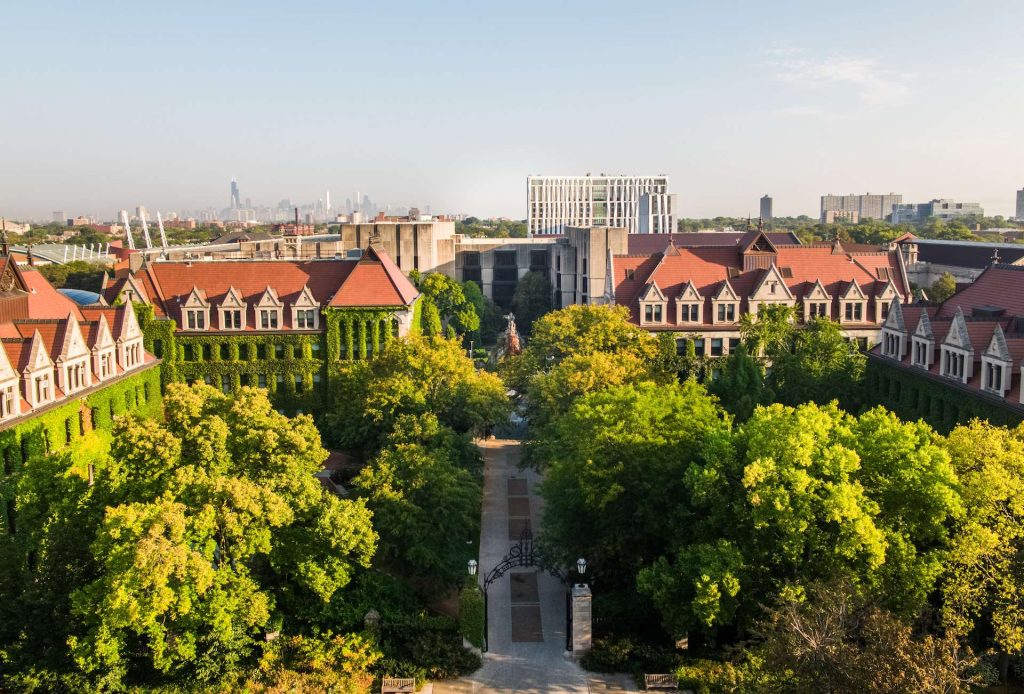

Mechanisms of Transport in Cells: How Molecules Move to Keep Cells Alive
The cell membrane, also known as the plasma membrane, is an essential component of cellular function. It acts as a flexible barrier that surrounds the cell, separating the internal environment from the external world. But did you know that the cell membrane also plays a vital role in transporting substances to keep cells alive? Understanding these transport mechanisms is key to understanding how cells function and maintain balance, also known as homeostasis.
In this blog post, we’ll dive into the different mechanisms of transport that help cells manage their internal and external environments. These mechanisms include active transport, passive transport, endocytosis, and exocytosis. Each plays a crucial role in helping cells survive and thrive. Let’s explore each one in detail.
Table of Contents
ToggleActive Transport: Moving Against the Gradient
Active transport is a process that involves the movement of molecules across the cell membrane against their concentration gradient. This means molecules are moved from an area of lower concentration to an area of higher concentration, which requires energy. This energy is typically provided by ATP (adenosine triphosphate), the cell’s energy currency.
Active transport is essential when a cell needs to bring in nutrients or expel waste that cannot move freely across the cell membrane. There are two types of active transport: primary and secondary.
Primary Active Transport involves the direct use of ATP to move molecules across the membrane. A well-known example is the sodium-potassium pump, which pumps sodium ions out of the cell and potassium ions in, maintaining crucial ion balances needed for various cellular functions.
Secondary Active Transport uses the energy stored in a concentration gradient established by primary active transport. It often involves a cotransporter that moves two substances at the same time, one going down its gradient and providing the energy to move another against its gradient.
Active transport plays a critical role in processes such as nutrient absorption, waste removal, and maintaining the ionic balance within the cell.
Passive Transport: The Natural Flow
Passive transport is the movement of molecules across a cell membrane without requiring any energy input from the cell. It occurs naturally as substances move from an area of higher concentration to an area of lower concentration—this process is also known as moving down the concentration gradient.
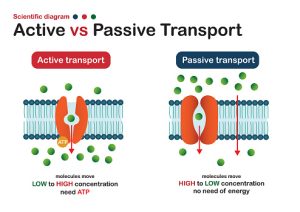
There are three main types of passive transport:
Diffusion: The movement of molecules from an area of high concentration to low concentration. This process requires no energy and continues until equilibrium is reached.
Osmosis: The movement of water molecules across a semi-permeable membrane. Water moves from an area with high water concentration (or low solute concentration) to an area with low water concentration.
Facilitated Diffusion: Some molecules need a little help getting across the membrane. Transport proteins in the membrane, such as channel proteins or carrier proteins, assist in moving these molecules down their concentration gradient without using energy.
Passive transport is vital for cells as it helps in nutrient uptake, waste expulsion, and maintaining internal equilibrium.
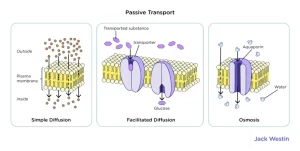

Endocytosis: Bringing Things Into the Cell
Endocytosis is a process by which the cell takes in substances by engulfing them. This process involves the cell membrane wrapping around the substance and forming a vesicle to bring it into the cell. There are three main types of endocytosis:
Phagocytosis: Often called “cell eating,” phagocytosis is used to engulf large particles such as bacteria or cell debris. Cells of the immune system, called phagocytes, use this process to fight off infections.
Pinocytosis: This process is known as “cell drinking.” In pinocytosis, the cell engulfs liquids and small dissolved substances, creating small vesicles filled with extracellular fluid.
Receptor-Mediated Endocytosis: In this specialized form of endocytosis, specific receptors on the cell membrane bind to target molecules. Once bound, the cell engulfs the complex into a vesicle, allowing for the precise intake of specific substances like hormones or nutrients.
Endocytosis allows cells to acquire nutrients, remove waste, and even fight infections by engulfing harmful particles.
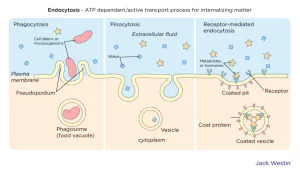

Exocytosis: Expelling Substances From the Cell
Exocytosis is essentially the reverse of endocytosis. In this process, substances are expelled from the cell by the fusion of a vesicle with the plasma membrane. It is crucial for removing waste, releasing hormones, and secreting enzymes.
Exocytosis occurs in two steps:
Vesicle Formation: The substance to be secreted, such as a protein or lipid, is packaged into a vesicle.
Fusion and Release: The vesicle moves to the cell membrane, where it fuses and releases its content into the extracellular space. This process is regulated by signaling pathways and proteins called SNAREs, which help facilitate vesicle fusion.

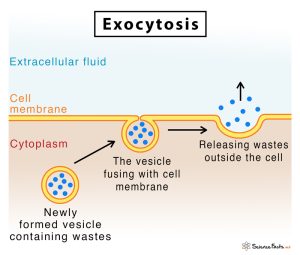
Practice Questions
To help solidify your understanding of these transport mechanisms, try these practice questions:
Which of the following is an example of active transport?
a) Diffusion of oxygen from high to low concentration
b) Uptake of cholesterol particles via receptor-mediated endocytosis
c) Release of insulin into the bloodstream
d) Sodium-potassium pump moving sodium ions out and potassium ions in
Answer: d) The sodium-potassium pump is an example of active transport, as it requires ATP to pump ions against their concentration gradients.
Which of the following describes exocytosis?
a) Engulfing of a bacteria by immune cells
b) Expelling waste or releasing hormones outside the cell
c) Diffusion of carbon dioxide from cells to the blood
d) Facilitated diffusion of glucose using a transporter protein
Answer: b) Exocytosis is the process of releasing substances out of the cell through vesicle fusion.
Conclusion
The mechanisms of transport in cells are essential to maintaining the right conditions for survival. From actively pumping substances to naturally letting them flow, and from engulfing nutrients to expelling waste, each transport process plays a crucial role in cellular homeostasis.
Understanding these mechanisms helps us appreciate the complex ways cells interact with their environment to maintain balance and proper function. Whether it’s active transport using ATP, passive movement down a concentration gradient, or the engulfing and expelling of materials through endocytosis and exocytosis, these processes are vital for cellular health.
Recent Posts
- The Periodic Table
- PAST PAPERS
- Unit 10 Overview: Mechanical Waves and Sound
- 9.4 Kirchhoff’s Junction Rule and Ohm’s Law (Resistors in Series and Parallel)
- 9.3 Ohm’s Law and Kirchhoff’s Loop Rule (Resistors in Series and Parallel)
- 9.2 Resistivity
- 9.1 Definition of a Circuit
- Top Public Universities in America
- Best Liberal Arts Colleges in America
- Top 25 Community Colleges in America
- University of Chicago
- Claremont McKenna College
- University of Michigan – Ann Arbor
- Johns Hopkins University
- Cornell University
Choose Topic
- ACT (15)
- AP (20)
- AP Art and Design (5)
- AP Physics 1 (1)
- AQA (5)
- Banking and Finance (1)
- Biology (13)
- Business Ideas (68)
- Calculator (67)
- Chemistry (3)
- Colleges Rankings (30)
- Computer Science (4)
- Conversion Tools (135)
- Cosmetic Procedures (50)
- Cryptocurrency (49)
- Edexcel (4)
- English (1)
- Environmental Science (2)
- Exam Updates (1)
- Finance (17)
- Fitness & Wellness (164)
- Free Learning Resources (187)
- GCSE (1)
- Health (107)
- History and Social Sciences (20)
- IB (1)
- IGCSE (2)
- Image Converters (3)
- IMF (10)
- Math (39)
- Mental Health (58)
- OCR (3)
- Past Papers (463)
- Physics (5)
- SAT (36)
- Sciences (1)
- Short Notes (5)
- Study Guides (26)
- Syllabus (19)
- Tutoring (1)
Recent Comments


Score Higher on AP Biology 2024: Tips for FRQ 4 – Conceptual Analysis
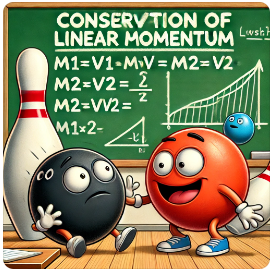

5.4 Conservation of Linear Momentum


Top Public Universities in America


Best Liberal Arts Colleges in America



